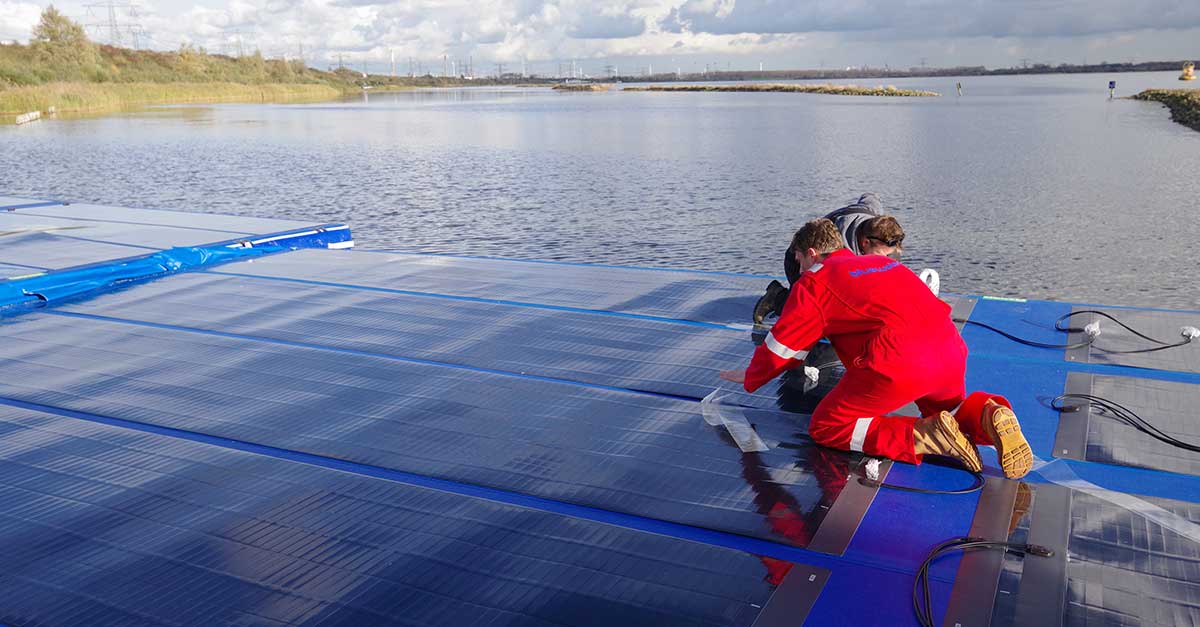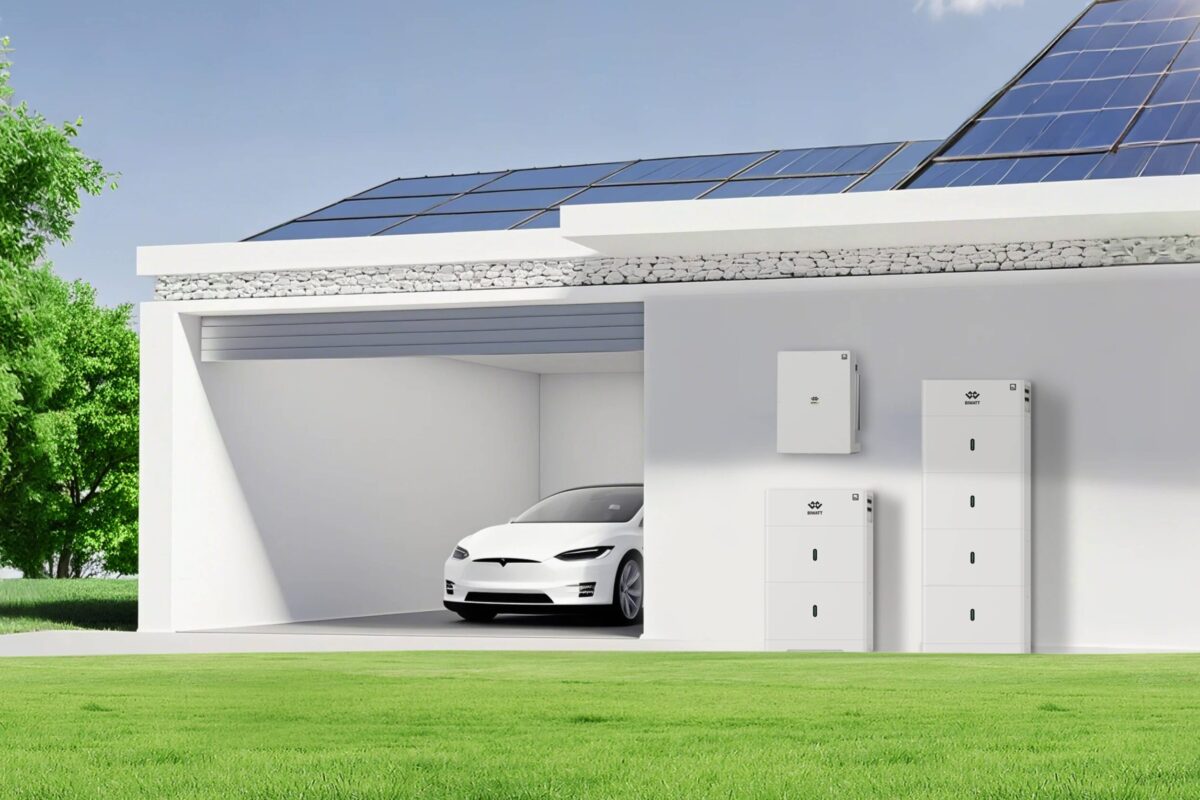A Dutch consortium led by the Netherlands Organization for Applied Scientific Research (TNO) is deploying a 20 kW pilot floating PV system on the Oostvoornse Meer lake at Maasvlakte, an artificial extension of the Europoort industrial facility at the Port of Rotterdam.
The pilot plant will be tested until mid-2022 and its design could be used to build an offshore PV facility with an installed capacity of up to 5 MW in the North Sea, connected to existing offshore wind farms.
The floating system features flexible, ultra-thin copper indium gallium di-selenide (CIGS) solar panels by turnkey equipment supplier Midsummer. The Swedish manufacturer has provided its Bold-144 (Magnum) products for the project. Each 485 W Magnum panel consists of 144 solar cells.
Installed on the float, the photovoltaic modules are partially connected in series and in parallel. They are then connected to a string inverter on land, where TNO has installed equipment to collect information on the performance of the array, including irradiation, temperature and wind speed data.
“Photovoltaics at sea does not really exist yet,” said TNO researcher Wim Soppe.”It is technically very difficult to install large floating systems with solar panels in the sea and keep them operational for decades.”
He said the design for the pilot system is viable, as it requires much less material and has lower costs compared to floating arrays built with crystalline silicon panels.
The standard version of the Bold model was originally intended for use with roofing felt and a membrane as a base and for both flat and sloping roofs. It is only 2 mm thin and weighs in at 3kg/m2. The cells are encapsulated by several waterproofing film layers.
The TNO is also studying the impact of wind and waves on the performance of floating solar systems at a special testing facility. Recently, scientists from the Copernicus Institute at Utrecht University claimed that offshore PV plants could be more productive than ground-mounted arrays after running a simulation comparing a North Sea project to a conventional system at the Utrecht Photovoltaic Outdoor Test field.
According to a recent report from DNV GL, the North Sea could host around 100 MW of floating solar capacity by 2030, and 500 MW by 2035. The levelized cost of electricity for offshore PV systems is currently estimated at around €354/MWh, but in the future it should be close to that of ground-mounted solar parks.
The research consortium includes Bluewater Energy Services, Genap, and the Maritime Research Institute Netherlands (Marin).
This content is protected by copyright and may not be reused. If you want to cooperate with us and would like to reuse some of our content, please contact: editors@pv-magazine.com.




I like the new system of solar panels i believe it will help Many people around the world.